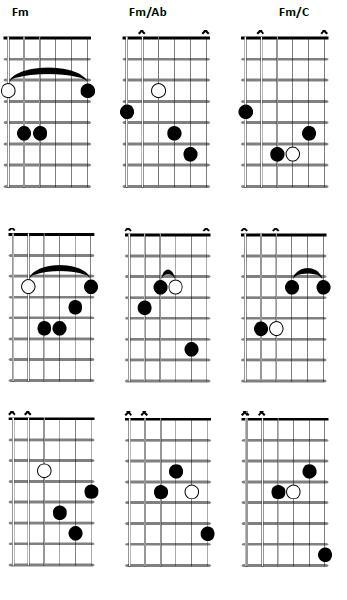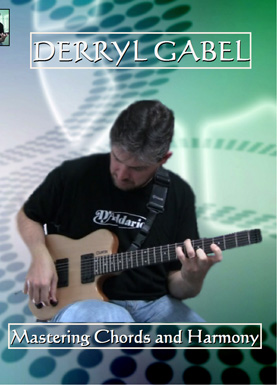 How’s it going, guys? This is John McClennan
and I’m here with guitarcontrol.com, bringing
you this video lesson. It’s something that we’ve
discussed before, is triads on lower strings.
For instance, if I take an A chord and I play 5-4-2,
and then I invert that chord and then I invert it
again and then even again, I get some cool voicings
that you can use if you’re playing in a band for
creating secondary guitar parts. And ideally just the
more voicings and inversions you can get into your
vocabulary, the better. So check it out.
We’re going to go through, we’re going to take
this chord now and instead of inverting it, what
I showed you before, we’re going to harmonize the
entire scale in chords. Be sure to click the link
below for the tab for these. But here’s the 1st chord.
A, which is going to be 5-4-2 and then I’m going
to go to a B minor, which is going to be 7-5-4 and
then C sharp minor, which is going to be 9-7-6.
Again, that’s the minor shape. Notice I just change
one note. Now, when I go to the major and lift that
note, raise it a half step, I get the major chord:
pinkie, 3rd finger, 1st finger; frets 10-9-7.
I move that up a whole step to get E and then
I’m going to get the F sharp minor. Go to that
minor shape. G sharp minor 7 or G sharp diminished,
and then… So this chord here would be 16-14-12 and
then resolving there to the tonic 1 chord up the
octave. So real great sounding chords. Be sure to
practice those and you can, of course, move them
around to any key. If I take that down a half step
I’ve got the key of A flat. Here’s back up at A, and
then B flat. Just for knowing those voicings on a
lower string. So practice it in ideally all 12 keys.
We’ll see you next time.
How’s it going, guys? This is John McClennan
and I’m here with guitarcontrol.com, bringing
you this video lesson. It’s something that we’ve
discussed before, is triads on lower strings.
For instance, if I take an A chord and I play 5-4-2,
and then I invert that chord and then I invert it
again and then even again, I get some cool voicings
that you can use if you’re playing in a band for
creating secondary guitar parts. And ideally just the
more voicings and inversions you can get into your
vocabulary, the better. So check it out.
We’re going to go through, we’re going to take
this chord now and instead of inverting it, what
I showed you before, we’re going to harmonize the
entire scale in chords. Be sure to click the link
below for the tab for these. But here’s the 1st chord.
A, which is going to be 5-4-2 and then I’m going
to go to a B minor, which is going to be 7-5-4 and
then C sharp minor, which is going to be 9-7-6.
Again, that’s the minor shape. Notice I just change
one note. Now, when I go to the major and lift that
note, raise it a half step, I get the major chord:
pinkie, 3rd finger, 1st finger; frets 10-9-7.
I move that up a whole step to get E and then
I’m going to get the F sharp minor. Go to that
minor shape. G sharp minor 7 or G sharp diminished,
and then… So this chord here would be 16-14-12 and
then resolving there to the tonic 1 chord up the
octave. So real great sounding chords. Be sure to
practice those and you can, of course, move them
around to any key. If I take that down a half step
I’ve got the key of A flat. Here’s back up at A, and
then B flat. Just for knowing those voicings on a
lower string. So practice it in ideally all 12 keys.
We’ll see you next time. 




